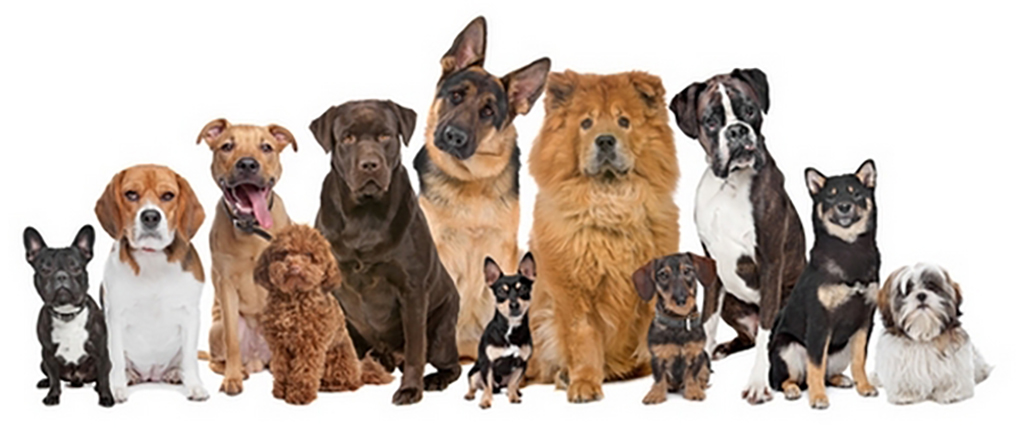
Basic Dog Obedience Training

Trying to control a dog who hasn't learned obedience commands is exhausting and often nearly impossible. But teaching him five simple commands will make a world of difference and provide a great opportunity for bonding.
Keep in mind that puppies have short attention spans, and it is unreasonable to expect to have your puppy's full attention for a long period of time. Keep your sessions short at first to minimize distractions and maintain your dog's attention, gradually increasing the amount of time spent on training each day.
Sit
The sit is one of the easiest skills to teach. A puppy who sits on command is easier to manage until he learns more self-control. For example, when you teach your dog to sit when the doorbell rings, he is less likely to jump up on visitors when the door opens.
How to Teach Sit
To teach the sit:
Get on your puppy's level, either on the floor or in a chair next to him.
Hold a treat close to his nose and let his head follow the treat as you move your hand up.
As his head moves up, his butt will lower.
When his butt hits the floor, release the treat to his mouth. Immediately praise him for his brilliance.
Repeat multiple times every day. Pair the behavior with the word "sit".
Don't hold the treat so high that your dog tries to jump up for it. Instead, hold it in your closed hand just high enough that he stretches his neck. Every time his rump hits the floor, tell him "Good sit"! This is a great game for children in the house to play with your dog.
Repetitions are important, but your dog will tire of multiple reps. Rather, play the sit game with your dog in short bursts multiple times every day. Reinforce the sit in other situations, like mealtimes. Have him sit before you put his food bowl on the floor or before you open the door to take him on a walk. If he breaks the sit, remind him of his job with a quiet "Oops, try again" before you open the door. If this command is reinforced every time you ask your dog to sit away from the door, he will be less likely to bolt and run when the door opens. In this respect, the sit command can be a lifesaver.
Come
The come command is another useful tool for managing annoying puppy behaviors. This command helps keep a dog out of trouble or gives him a job to do. If he escapes the fenced yard or bolts out an open door, the come command can also save his life. This foundation skill is one that the two of you will use and refine for the rest of his life.
How to Teach Come
To teach the come:
Clip a light line to your dog's collar and let him drag it around.
After he is accustomed to the line, pick up the end and hold it as you follow him around the yard. As he gets used to this, he'll begin to understand that the two of you are attached.
With your marker word in mind - "yes" - and a few treats, walk backward, encouraging him to follow along. When he twirls around and comes toward you, say "Yes"! and treat. Tell him that he's the cleverest dog in the world.
Begin to pair the behavior with the word "come". Every time he responds correctly, praise and reward him. Make the come command a game that your puppy wants to play.
Don't get in the bad habit of yelling "Come come come come" multiple times if your dog does not respond. Remember the one-word, one-command rule: Once your dog understands the command, if he does not come the first time you ask, go to him and gently guide him to where you want him to be. If you stand in the yard or at the door and holler repeatedly, he either doesn't understand the command yet or you are expecting too much too soon.
Never call a dog to come for discipline. If so, you will teach him to associate the command with a negative consequence. If your dog is behaving badly, always go to him rather than calling him to you.
Stay
The stay command is one of the hardest for puppies and young dogs to master. Asking a dog, who only wants to sit on his owner's feet or lean against her while she is in the kitchen, to stay put in another area is almost asking too much! Like the other basic commands, however, the stay is a lifesaver. A dog who is taught to stay won't chase a duck in a pen or charge a cow in a field. The dog who understands stay can also go on to more advanced obedience or rally competitions.
The goal with stay is to teach your dog that his job is to remain right where he is until given further instructions.
How to Teach Stay
To teach the stay:
Put a leash on your dog and have him sit comfortably next to you.
Wave a flat palm toward his muzzle and say "Stay".
Step in front of your dog, wait a few seconds, and then step back beside him.
Reward him for not breaking his stay.
If he moves, calmly say "Oops" or "Uh uh" and put him back where he was initially. Again, give the stay command along with the hand signal.
Practice this multiple times every day in different locations.
After rewarding him with praise and a treat for success, teach him a release word, or the word you will say when it's time for him to be released from the stay. A good release word is "okay".
Down
The down command is a good management tool that helps keep dogs out of trouble and out from underfoot. This behavior is often difficult for many dogs to learn because it's a submissive posture. A shy or fearful dog might have more trouble learning or performing a down, so go slowly while teaching this skill. Use a happy voice, lots of praise, and good treats while training.
How to Teach Down
To teach the down:
Hold a very tasty treat in your closed hand and place it at your dog's muzzle.
When he notices the scent of the treat, move your hand toward the floor. He should follow the hand that hides the treat.
While the dog's head follows your hand, move your hand along the floor in front of him. His body will follow his head, and once he stretches out into a down, open your hand to let him eat the treat.
Repeat multiple times daily and pair the behavior with the word "down".
If your dog lunges toward your hand, say "Nope" and take your hand away before he can get to the treat. If he tries to sit up, break away and start again. Never push him into a down.
Clever dog that he is, your dog will try everything to get to the treat. He's showing effort and should not be punished for thinking. Encourage every little bit of progress until he understands the command. After a successful attempt, always release your dog from the down and run off to play with him.
Walk Nicely on Leash
A dog who doesn't lunge or pull at the end of his lead shows your neighbors and friends that you have trained him to be a good member of the community. Additionally, a dog who walks attentively next to his owner is less likely to become fearful in new situations.
Your dog has already begun to learn the come command on leash and to understand that the leash connects the two of you. It's time to begin to train him to walk politely and calmly by your side.
How to Teach Walk Nicely On Leash
To teach loose-leash walking:
Attach his leash to his buckle collar and say "Let's go" using your happy voice. Put treats in your left side pocket or a bait bag.
Encourage his forward motion by patting your left leg. When he is close to your side, pop a treat in his mouth.
Every few steps stop to praise him for being in the correct place.
When he forges ahead or lags behind, stop to let him wander to the end of his leash.
The slight leash tension will cause him to turn around. As soon as you feel the slack in the line, say your verbal praise marker: "Yes"! Praise and treat when he bounces back to you.
When he pulls, practice the "be a tree" principle, stopping all motion. His unwanted behavior will self-correct. Wait him out if he doesn't come back to your side.
Loose-leash walking takes a dedicated owner who allows her dog to make mistakes and has the patience to teach him the proper behavior.
Once your dog can walk on a loose leash, begin to pair the behavior with the heel command. This means "stay close to my left leg whether we are stopped or walking". Take a few steps with your dog in the heel position, treat, and praise. Practice, practice, and more practice are required to teach your dog this command.
Excerpts adapted from:
Breed Lover's Bernese Mountain Dog by Linda Rehkopf, 2012 by TFH Publications, Inc.
Sources
[1] "Nylabone"
[2] "Positively"
[3] "Pet Place"
[4] "Pet Education"
[5] "Green Acres"
[6] "The Kennel Club"
Our Mobile Application
Check out Our Mobile Application "Dog Breeds Central"
